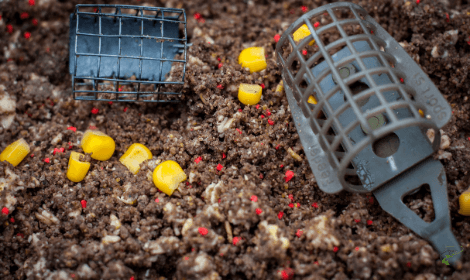
The large selection of feeders available on the market today provides an extremely versatile method for catching carp and many other coarse fish.
Whether it be a method feeder for fishing micro pellets, a cage feeder for fishing groundbait mixed with chopped worms or a maggot feeder for baiting up swims with maggots, it is no doubt that feeder fishing is one of the best methods for carp fishing.
I have previously covered topics such as “What is feeder fishing” where you’ll find a list and explanation of the feeders available for carp fishing with a brief explanation of how to fish with feeders.
I have also covered many topics on purely method feeder fishing including how to set up a method feeder rig but never any feeder fishing tips, until now.
This post is going to provide a list of 14 feeder fishing tips that can be applied to any type of feeder fishing that is sure to help you catch more fish.
1. Bright Hookbaits are Great
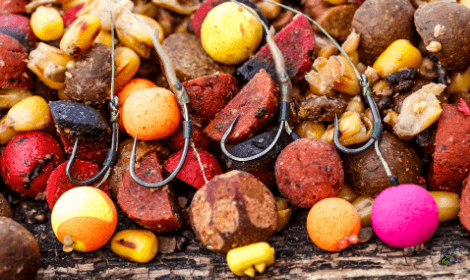
When fishing the method feeder the bait moulded around your feeder will help in baiting up your swim and attracting fish to your swim but a great hookbait is also vital for catching these fish.
Bright hookbaits work extremely well in many carp fishing scenarios and can make the difference between catching fish or none at all.
Bright hookbaits stand out clearly in clear waters which can give the hungry carp something to hone in on when looking for their next meal.
These bright hookbaits are best used when the waters are clear and fish are feeding heavily over your bed of bait.
In murky waters a darker hookbait actually works better to stand out and create a silhouette so the fish can find your bait.
2. Be Prepared to Move
A carp fishing tactic that work in the majority of situations and not just when fishing the method feeder is being prepared to move.
Too many carp anglers get rather comfy in their peg inside bivvys and tend to just wait out the day even if they are not catching anything. I can even be guilty of this sometimes.
By travelling lighter you have far more opportunities to move peg quickly and easily to try to track down the fish.
No matter what time of year you are fishing, location is key to catching plenty of fish. In the summer months, the fish should be more active and looking for food but you can greatly increase the chances of catching them by being in the correct place from the start.
In the winter the location you are fishing is even more key. In the winter, the fish will generally be less active and not looking for as much food, so you need to take the food to them.
During winter, I will usually look for places that look like the carp might be lingering, such as features on the water. I’ll then make a few casts and wait around 15 minutes.
If there are no line bites and I’ve not caught a thing, I’ll move and try another spot.
Realistically though you can stay in the same peg and try casts to plenty of water without moving too far.
3. Mix Perfect Groundbait or Micropellets

To fish the feeder effectively, you must make sure your feeder mix is mixed to perfection to effectively present your bait in the ball of free bait.
If you fail to mix your bait properly the ball around your feeder will either break away too easily or won’t break down enough to release your hookbait.
When the mix is too dry, the ball will break away when the feeder hits the water, which will disperse this free food over a large area.
When fishing the feeder you want the free bait to be concentrated around your hookbait so the interested carp can pick up your hookbait when they are feeding on the other bait.
If your mix is too wet and your hookbait has been moulded around a method feeder then the bait might not break down enough in the water so your hookbait might become stuck and useless.
If you are looking for information on how you can mix the perfect groundbait and micro pellets take a read at the posts I’ve linked below;
4. Add Flavours
Another great way to increase your feeder fishing is to branch out from the normal flavours of groundbait and micro pellets and add your own.
This helps to give your bait an edge over the rest of store bought baits used to fish the lake.
This also helps massively when feeder fishing in murkier water. The added flavours give the carp more chance of finding your bait and bring them in from the surrounding areas.
5. Think about the Weight of Feeder
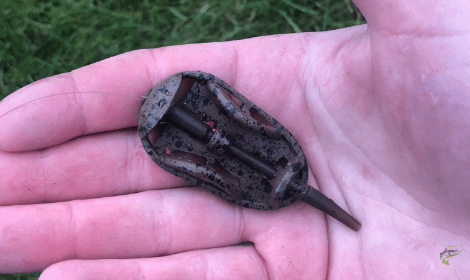
What weight of feeder you choose whether it be a method feeder, open-ended feeder or even maggot feeder can help improve your feeder fishing massively.
What weight of feeder you choose mainly comes down to the venue you are fishing in terms of how far you need to cast and if you are planning to be casting to any slopes in the water.
An example of these slopes could be fishing close to an island where it tapers into the water steeply.
If you are planning to cast far distances, then a heavier feeder up to 50g can make casting accurately at distances far easier.
You should also aim to use a heavier feeder of around 40g if you are fishing on steep slopes.
This makes sure your feeders anchor itself into position and does not roll down the steep banking or your hookbait will be presented in the completely wrong location.
As a general rule of thumb, I’d recommend not to fish with anything less than a 30g feeder.
6. Pick the Right Rod Tip

Selecting the wrong quiver tip is another mistake a lot of beginner anglers make when fishing any type of feeder.
Usually, your rod will come with a selection of at least three tips that will have different test curve ratings.
The higher the number, the stiffer the tip will be.
These tips will be your bite indicator and what you select will depend on the weather conditions and what weight of feeder you are fishing.
If you are fishing at large distances with a 50g feeder, then a stiffer test curve tip should be used.
These stiffer test curve tips should also be used if the water is flowing or there is a lot of wind on calm lakes. This ensures your tip is not moving constantly with the wind, and you can see when there are bites.
You can find spare quiver tips and quiver rods to suit all budgets at “Dangler“.
7. Try Braid
If fisheries allow braid can be a great way to improve your feeder fishing. This is extremely useful when fishing for shy fish such as bream who give subtle bites.
The lack of stretch in braid means slight baits are much easier to detect and will indicate on your rod tip a split-second sooner. This can mean you are ready to strike into more small bites.
Make sure you use sinking braid and attach a trace of around 10ft at the end to help take some strain off the fish when fighting.
This trace at the end will also help to stop hook pulls and lost fish when using braid.
8. Take Plenty of Spares
When fishing feeders for carp you are quite often going to be casting to feature such as overhanging trees, weed beds and even extremely close to islands.
This means snagging on things is all too common and you can quickly lose a lot of feeders if your casting is not quite up to scratch.
By taking plenty of spare feeders and hook lengths you reduce the risk of having to cut your fishing session short due to running out feeders.
By having plenty of spares you also give yourself the opportunity to switch up what type of feeder you are using if one type is not providing any fish.
9. Casting Perfectly
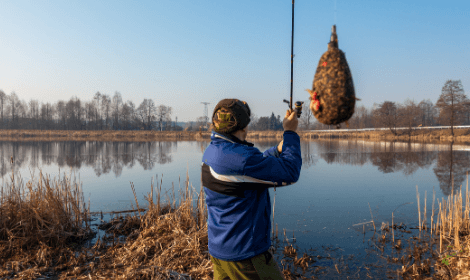
Accurate casting is another essential for fishing the feeder properly. By consistently casting your feeder to the same swim you can effectively bait up a small area and keep the fish feeding here for longer.
If you spread free bait out thin across a large area the fish will be far more spread out feeding on all these locations.
When feeder fishing this is exactly what you don’t want and you want the feeding fish to be bunched up in a small area where your hookbait is cast to.
By lining up a marker float and clipping up your line you can make sure you casts are perfect every time. Take a read at this feeder casting post if you need some more tips and tricks.
10. Find a Perfect Swim
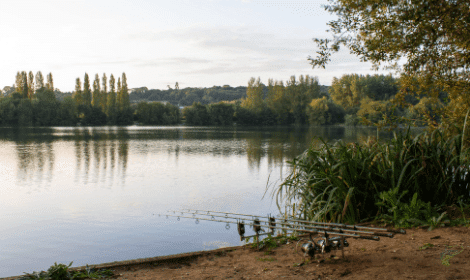
When you arrive at a carp fishing venue you should take some time to scout around the water and look for signs of fish so you can pick the best area to be fishing.
If you get to the lake early before everyone else you should spend time looking for areas where the water is slightly murkier which should indicate the carp rooting around and feeding in the silt below.
You should also look for carp breaching the surface which quite often indicates that the carp are cleaning their gills after feeding below this spot.
If there is not many visual indications of where the carp are hiding you can start to look for spots where there are obvious features that the carp like to find cover beside.
Carp feel far safer close to features such as reeds, lilly pads, overhanging trees and even close to island banks. If you can locate some of these spots and cast as close as possible to these areas, chances are the fish won’t be far away.
11. Cast Regularly
As well as casting accurately you must cast regularly to make you feeder fishing as effective as possible. There is no use casting out a feeder with a small amount of bait and leaving it there for hours.
The free bait moulded around your feeder will be consumed extremely quickly if the fish are in the area and will move off to find other food.
When you begin your feeder fishing, after spending some time to find a spot that looks like it should hold fish, you should cast often every 5 to 10 minutes to build up the feed.
After around 10-15 casts on the same spot you can start to leave your feeder in the water for around 20-30 minutes before you rebait and cast again.
12. Bait Up in Advance
If you are planning to fish somewhere that is not heavily fished like commercial fisheries then taking the chance to pre-bait a swim can result in a lot more fish.
This is incredibly useful if you are fishing natural venues with fewer carp stocks than you local carp water. By watching the water on many occasions you should be able to spot areas where the fish like to feed and congregate.
You can then frequent this spot often during the week or two before fishing to spod, spomb or throw a few kg of bait to this area.
The fish will then start to frequently come back to this spot looking for the free food and will even wait about in the area for more to come.
By baiting up in advance you can be sure there is fish in your swim when the day of fishing comes along.
Obviously, on busy commercial waters this isn’t really realistic. You could spend a week baiting up an area but the chances are someone else will be fishing it when you arrive for your days fishing.
13. Recognise Line Bites
Another feeder fishing tip that a lot of beginner carp anglers need to know is how to differentiate between line bites and real bites.
Line bites occur when you line is touched in the water by passing fish which results in a small twitch and movement in the tip of your feeder rod.
When this is the case you must not get over excited and strike into every movement of the rod. If you are fishing short hooklinks the chances are the fish will hook itself when it picks up your bait properly.
When the fish picks up your bait and runs you’ll know all about it and your quiver tip will bend significantly.
Just be ready and don’t let your rod get dragged into the water by the pulling fish.
Line bites are also a great indication that the fish are in your swim and feeding on your free bait so be patient and wait for them to find your hookbait.
14. Pick the Best Hookbaits
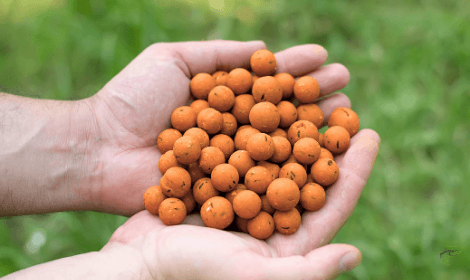
In all carp fishing instances your choice of hookbait will dictate if you are catching fish or not and with feeder fishing this is no different at all.
I will give you a quick run down of the best hookbaits for feeder fishing and you can give them a go.
The best hookbaits for fishing the method feeder are as follows;
- Boilies
- Sweetcorn
- Pellets
- Pop-ups
Boilies
Boilies are small balls of bait formed by boiling a paste mixture.
They are up there with the most common carp fishing baits and for good reason. They don’t break up in the water and are packed with ingredients such as fish meal and amino acids that are proven to get the carp feeding.
They can be presented near perfectly on a hair rig so the unsuspecting carp will have no choice but to pick up your bait and run.
Sweetcorn
Sweetcorn is one of the most versatile carp bait and can be used in many situations such as in feed mixture or hair rigged as hook bait.
It’s visually attracting colour helps to bring carp in from the surrounding areas and it’s high salt, sugar and amino acids are excellent at getting the fish to feed.
You can read more about why sweetcorn is one of the best carp baits for feeder fishing in this post.
Pellets
Pellets are another extremely effective hookbait for feeder fishing.
Pellets work great in the summer months when fish are feeding heavily due to their high oil content that can bring fish in from the surrounding areas.
Like boilies they are also available in a range of colours and flavours that the carp can’t resist.
Most pellets for hook baits come in “meaty” flavours and many anglers believe these flavours work best in the summer months but to be honest you will find they work all year round just make sure and scale down during the winter months and don’t over feed your swim as the carp will be less active.
Pop-Ups
Pop-ups are basically just floating boilies and come into place when fishing lakes with debris covered bottoms. These pop-ups will raise your hookbait from the bottom and make it far easier for the fish to find.
They are also most often found in fluorescent colours so they act as a beacon for attracting carp into the swim.
That’s All!
I hope you have found these 14 feeder fishing tips useful. Feeder fishing is definitely one of the most effective ways of catching carp and other course fish.
The next time you are going to bring out any time of feeder make sure to read over these tips again to refresh your memory.
Feel free to tell people about your feeder fishing experiences or ask any questions below!

